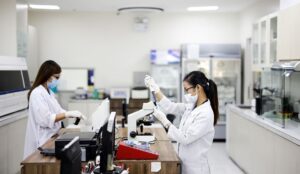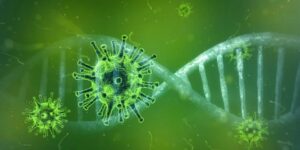Why is there no specific medicine against Coronavirus in the world so far?
The severe acute respiratory syndrome (SARS) that broke out in Guangdong in February 2003 and the Middle East respiratory syndrome (MERS) that broke out in Saudi Arabia in September 2012 were caused by SARS-CoV and MERS-CoV coronaviruses, respectively. Faced with the coronavirus that hit again after 2003, why hasn’t the world developed a special effective drug?
What are the bottlenecks in the development of such drugs? What lessons should the world learn from developing anti-coronal drugs?
What reforms have been adopted to expedite the development and approval process for such drugs?

Why is there no specific medicine for coronavirus worldwide?
According to public information from the WHO, 8098 people were diagnosed with SARS in China, and 774 were killed. China has curbed SARS within one year. While MERS continued from September 2012 to 2019, the WHO reported 2468 confirmed diagnoses and 851 deaths. The Ebola virus began raging in Africa from Guinea at the end of 2013 and spread to many European countries. As of June 3, 2015, it has killed 11,164 people. Isolation and structural analysis of various coronaviruses have been completed during the virus outbreak period, but there are no effective drugs for coronaviruses worldwide.
All current treatments are either anti-viruses, such as anti-HIV lopinavir/ritonavir, ridicvir, various anti-HIV protease inhibitors, nucleotide transcriptase inhibitors, etc., or Compound of Chinese herbal medicine with an immune modulator, anti-cancer drug and heat-clearing and detoxifying. However, no pharmaceutical company has specifically developed specific drugs against coronavirus. The reason is that the transient infection of the coronavirus itself and the variability of the virus itself; the current global approval system for new drugs for this infectious disease and the long development cycle, and the inadequacy of the transient infection of this epidemic; Determined by the normal biomedical economics of pharmaceutical companies and investors.
The biggest difference between coronavirus infectious diseases and other diseases such as cardiovascular diseases and tumors is that the former is human-to-human or animal-to-human, and the latter is non-infectious and is caused by abnormal metabolism of human cells, tissues, and organs; The former has a transient peak of infection, and strict isolation can control the disease during the epidemic period, while the latter does not have a peak period, and autologous metabolic abnormalities occur; the former has no age difference, and the latter is mostly middle-aged and elderly disease. At the same time, the virus is an absolute parasitic species, leaving its host cell dead. The virus’s dependence on host cells also guides the virus to continuously produce adaptive evolution and mutation in its host microenvironment. The virus has a high replication mutation rate and is prone to produce resistant strains.
Based on the above reasons, the new drug development process and approval process formulated by the US Food and Drug Administration in the last century are only applicable to the development of new drugs for human diseases (such as cardiovascular drugs and anticancer drugs), including infectious but long-term in the human body. The existence of the HIV virus and hepatitis virus is not suitable for the development of transient coronavirus drugs.
“Old medicine new use” and “combined medicine” strive for a short time breakthrough
New drug development processes and approval procedures in China and other countries, from the discovery of new drugs in laboratories, preclinical cells, and animal tests to verify the effectiveness and safety of drugs, to the phase I-III clinical trials for at least 8 years and more. Billions of capital investment. This procedure is not suitable for the development of coronavirus drugs.

The micro-electron microscope structure of the new COVID-19 virus has just been decrypted and publicized. China’s high political governance capacity has contained the epidemic crisis among 1.4 billion people, and the world has seen the dawn of the reversal of China’s epidemic! But at this time, drugs specifically targeting the structure of COVID-19 have not yet begun to emerge. Therefore, the development, clinical trials, and marketing of such drugs must be reformed! Based on the above reasons, no pharmaceutical company in the world specializes in the development of coronavirus drugs or vaccines, because the establishment of such projects does not match the pharmacoeconomics and is a loss-making business!
Furthermore, after the acute infectious period of a new coronavirus, patients can develop corresponding long-lasting (or lifetime) immunity. Therefore, even if the new drug is successfully marketed a few years later, its therapeutic target may be replaced by the new virus, and the original target population may no longer exist. Another technical bottleneck in the development of such drugs is that the drugs must not only target the virus itself, but also the fatal acute lung injury and acute respiratory distress syndrome caused by the virus infection.
In summary, can China take reform measures to speed up the development, approval, and marketing of such drugs when summarizing the political governance experience of the second rapid containment of coronavirus? This is a major event for pharmacists, clinicians, drug regulatory departments and pharmaceutical companies to draw up a blueprint. We propose that drug development for future coronavirus infections must be based on understanding the mechanism of virus invasion, replication, and release and the causes of respiratory diseases, and adopting strategies of “old medicine new use” and “combined medicine” in the short Breakthrough in time.
On the basis of understanding the occurrence and development of the disease, we can find targeted re-use of old drugs in existing drug stores. The human safety and dose-effect parameters of this old drug are well known, so as long as the selective inhibition of virus and host cells in vitro is very significant, it can be directly used for raging or future coronavirus treatment without having to follow the steps Various experiments were performed that took huge resources and time. Perhaps these tests are not over and the epidemic is over. The purpose of combined medication is to comprehensively treat the disease with multiple safe and effective drugs at all important nodes of disease occurrence and development to ensure recovery.
(The author is an international pharmaceutical expert, AAPS Fellow of the American Pharmaceutical Association, the Provincial Key Laboratory of Tumor Metastatic Drug Prevention of Fuzhou University, and Professor of the Marine Research Institute of Minjiang University)